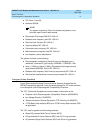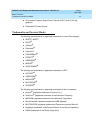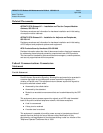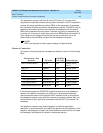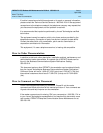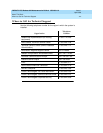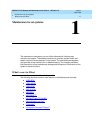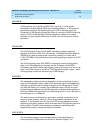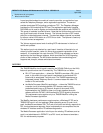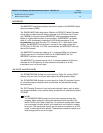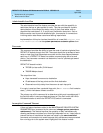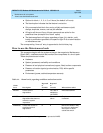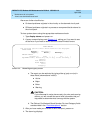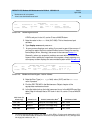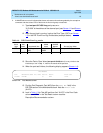
DEFINITY ECS Release 8.2 Maintenance for R8.2csi
555-233-119 Issue 1
April 2000
Maintenance for csi systems
1-2What’s new for R8csi
1
H323-BCH
H.323 signaling is very similar to ISDN Q.931 signaling. In order to take
advantage of existing Definity ISDN call processing software, H.323 trunk call
processing includes H.323 signaling groups, H.323 D-channels and H.323
B-channels. H.323 Signaling groups are similar in concept to ISDN PRI signaling
groups. H.323 D-channels are an artificial fabrication created only to allow
maximum re-use of system ISDN code. H.323 B-channels are also an artificial
fabrication.
H323-SGRP
The H.323 Signaling Group (H323-SGRP) maintenance object supports a
signaling channel for H.323 Trunk connections. The Media Processor (MedPro)
TN802B circuit pack provides audio connectivity, working in concert with a
C-LAN (TN799B) circuit pack that provides control signaling to support an H.323
connection.
The H.323 signaling group (323-SGRP) is a signaling channel that physically
rides on a C-LAN ethernet port (socket) and the IP network. Unlike ISDN
D-channels, the H.323 channel may actually come up and down on a call by call
basis. The H.323 channel is actually a TCP/IP signaling channel. Layers 1 and 2
of this signaling channel are monitored by IP PING testing.
H323-STN
This maintenance object covers implementation of the maintenance for native
mode H.323 endpoints. Native mode H.323 applications such as NetMeeting or
Proshare only provide what is needed to support the H.323 standard. There is
very little that Definity can invoke in the maintenance area. Definity will report
errors as they are detected via the RAS registration and keep-alive mechanism.
Definity will PING the endpoint both via the signaling path (i.e. via C-LAN) and via
the media path (i.e. via Medpro).
This station type is not attached to a port board. Insertion of the station is not
driven by board insertion, rather it is driven by successful registration of the
endpoint. It is maintained via a set of explicit TCP/IP ping requests and errors
reported by the switch software, which terminates the H.323 signaling portion of
each endpoint. The MO follows standard maintenance methodology and
supports test, busyout, release and status commands.
DIG-IP-STN
This maintenance object covers implementation of the maintenance for
Lucent-provided IP Softphone or the Centre-Vu Remote IP Agent. The



